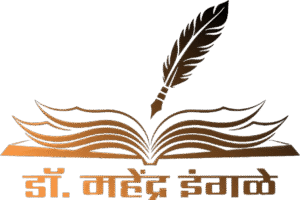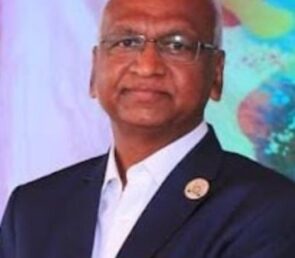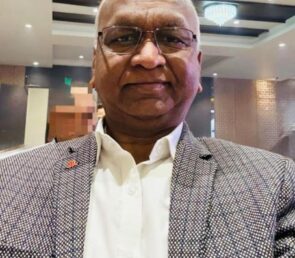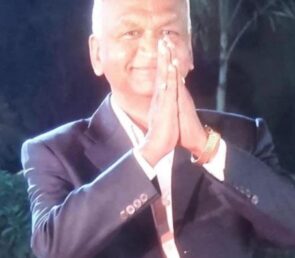
Decision-Making with Intuition Integrated with Prayer
Date : July 18, 2025 By
Abstract
Decision-making often requires navigating complex challenges, especially when logic, data, and precedents fail to provide clarity. This paper introduces the Decision-Making with Intuition Integrated with Prayer model, uniquely designed for individuals in high-stakes roles facing transformative decisions that could shape history. Grounded in three principles – intuition, conversational prayer, and absolute responsibility – this seven-step framework enables ethical and confident choices while relieving psychological distress. Unlike existing frameworks that integrate rational and non-rational approaches, this model focuses solely on intuition and prayer as the guiding forces. The logical structuring of decisions occurs after the intuitive process, ensuring alignment with prevailing rules and regulations. This framework acknowledges that while rational and AI-assisted models are indispensable in many contexts, there are situations where data is unavailable, overwhelming, or unreliable. In such cases, this model provides clarity and decisiveness, allowing decision-makers to act confidently. As a conceptual paper, it invites researchers to explore its applications further, particularly in areas where conventional methods fall short. This paper also highlights how the model can address globally transformative dilemmas, such as the future of AI research.
1. Introduction
Decision-making is a defining process in leadership, governance, and personal growth. Rational and AI-assisted models often play a crucial role in guiding choices, especially in contexts like business or data-driven scenarios. However, there are moments when data is unavailable, overwhelming, or biased, and time constraints demand immediate yet ethical action. This is particularly true in high-stakes situations where decisions can have long-term societal, organizational, or historical implications.
This paper presents the Decision-Making with Intuition Integrated with Prayer model, grounded in three foundational principles:
. Intuition: The subconscious mind’s ability to recognise patterns and synthesize insights beyond conscious processing
. Coversational Prayer: A direct personal dialogue with a higher power, fostering clarity, emotional strength, and ethical grounding
. Absolute Responsibility: Empowering decision makers to own their choices fully, eliminatig mental distress and hesitation
While rational models and AI-assisted decision-making tools are indispensable in certain contexts, this model focuses on situations where logic fails or is insufficient. By combining intuition and prayer, it offers a unique approach to achieving transformative decisions while ensuring psychological freedom for the decision-maker.
2. Theoretical Foundations
2.1 Intuition and Subconscious Processing
Intuition connects the subconscious mind to decision-making, enabling rapid and impactful judgments. Key elements include:
Pattern Recognition: Years of experience create subconscious cues that guide intuitive decisions.
Implicit Memory Retrieval: Decisions emerge from stored knowledge without explicit recollection.
Dual-Process Theory: Intuition and rational thinking complement each other, combining speed and accuracy.
2.2 The Role of Conversational Prayer in Decision-Making
Prayer offers clarity and peace during critical decision-making moments. This model emphasizes conversational prayer, a direct and personal dialogue with a higher power, as opposed to meditational prayer. Conversational prayer fosters:
Mental Clarity: By verbalizing thoughts and seeking guidance, decision-makers gain focus.
Emotional Strength: Prayer provides reassurance and confidence in uncertain situations.
Ethical Grounding: It aligns decisions with moral and spiritual values.
Insights from foundational texts illustrate its significance:
‘The Power of Positive Thinking’ discusses how prayer fosters confidence and resilience
‘Tough Times Never Last, But Tough People Do’ highlights prayer as a source of inner strength during adversity.
‘Autobiography of a Yogi’ emphasizes spiritual reflection as a pathway to higher ethical reasoning.
2.3 Differentiating the Model
Academic research, such as Kurt Matzler’s study on intuitive decision-making, provides a foundation for understanding intuition. Similarly, Anselmo Ferreira Vasconcelos’ work explores the integration of prayer and managerial decision-making, combining rational and non-rational approaches.
However, this paper extends the concept by incorporating prayer and spirituality, creating a holistic model that merges faith, ethics, and personal responsibility. Unlike Vasconcelos’ integration with rational approaches, this model emphasizes intuition and prayer as stand-alone guiding forces. Rational structuring occurs only after the decision-making process to ensure alignment with rules, regulations, and professional frameworks.
2.4 Absolute Responsibility
One of the most profound aspects of this model is its emphasis on absolute responsibility. Many leaders and decision-makers, especially in high-stakes scenarios, face psychological distress due to a lack of clarity or external pressures. This often leads them to seek validation or explanation – through press conferences, interviews, or autobiographies – in an attempt to justify or ease their burden.
By taking absolute responsibility, decision-makers free themselves from the need for external validation. This concept empowers individuals to confidently accept the outcome of their decisions, knowing they are guided by their own intuition, spiritual grounding, and ethical convictions.
3. Seven-Step Process: Decision-Making with Intuition Integrated with Prayer
Step 1: Spiritual Preparation
Engage in conversational prayer to quiet distractions and strengthen focus.
Foster openness to intuitive insights through gratitude and faith.
Step 2: Defining the Decision
Clearly define the challenge or choice, focusing on its essential aspects.
Avoid overcomplicating the issue – clarity is key.
Step 3: Intuitive Recognition
Pay attention to subconscious cues, gut feelings, and emotional signals
Trust the patterns and instincts emerging from prior experiences.
Step 4: Validation with Responsibility
Accept full ownership of the decision, ensuring confidence in intuitive judgment.
Relieve mental distress by embracing absolute responsibility.
Step 5: Ethical and Logical Cross-Checking
Briefly evaluate if intuition aligns with logic and ethics.
If conflicts arise, return to prayer and reflection for greater clarity.
Step 6: Implementation with Confidence
Execute the decision decisively and without hesitation.
Adapt actions based on feedback and outcomes
Step 7: Reflection and Continuous Growth
Evaluate results to refine future intuitive judgment.
Use prayer to strengthen clarity and resilience for future decisions.
4. Practical Applications
4.1 Addressing Data Overload and Precedent-Free Scenarios
When data is overwhelming or contradictory, or when no historical precedent exists, decision-making relies heavily on intuition and faith. This model empowers decision-makers to prioritize essential truths, focusing on clarity and ethical outcomes.
Example: A policymaker navigating a global crisis uses prayer and intuition to make impactful decisions amidst uncertain and conflicting data, shaping the course of history
4.2 High-Stakes Decisions and the AI Dilemma
One of the most critical decisions in the history of humankind looms ahead: Should research in AI be paused until humanity develops mechanisms to confidently control it? This is a question that spans science, philosophy, ethics, and policy.
Who makes this decision – scientists, social thinkers, statesmen, or philosophers? Rational models and AI tools may provide insights, but the ultimate choice requires moral and spiritual clarity. This model offers a pathway to make such transformative, unprecedented decisions by guiding stakeholders through intuition and prayer-driven decision-making.
5. Conclusion
The Decision-Making with Intuition Integrated with Prayer model presents a transformative framework for high-stakes, precedent-free decisions. While acknowledging the importance of rational and AI-assisted models, this paper demonstrates how intuition and prayer address unique challenges where conventional methods fall short. By emphasizing absolute responsibility, the model empowers decision-makers to act confidently, free from psychological burdens, and create impactful outcomes.
As a conceptual paper, this work invites further exploration and validation by researchers to expand its applications. In a world grappling with ethical dilemmas and transformative decisions, such as the future of AI, this model provides clarity and guidance in moments of profound significance.



